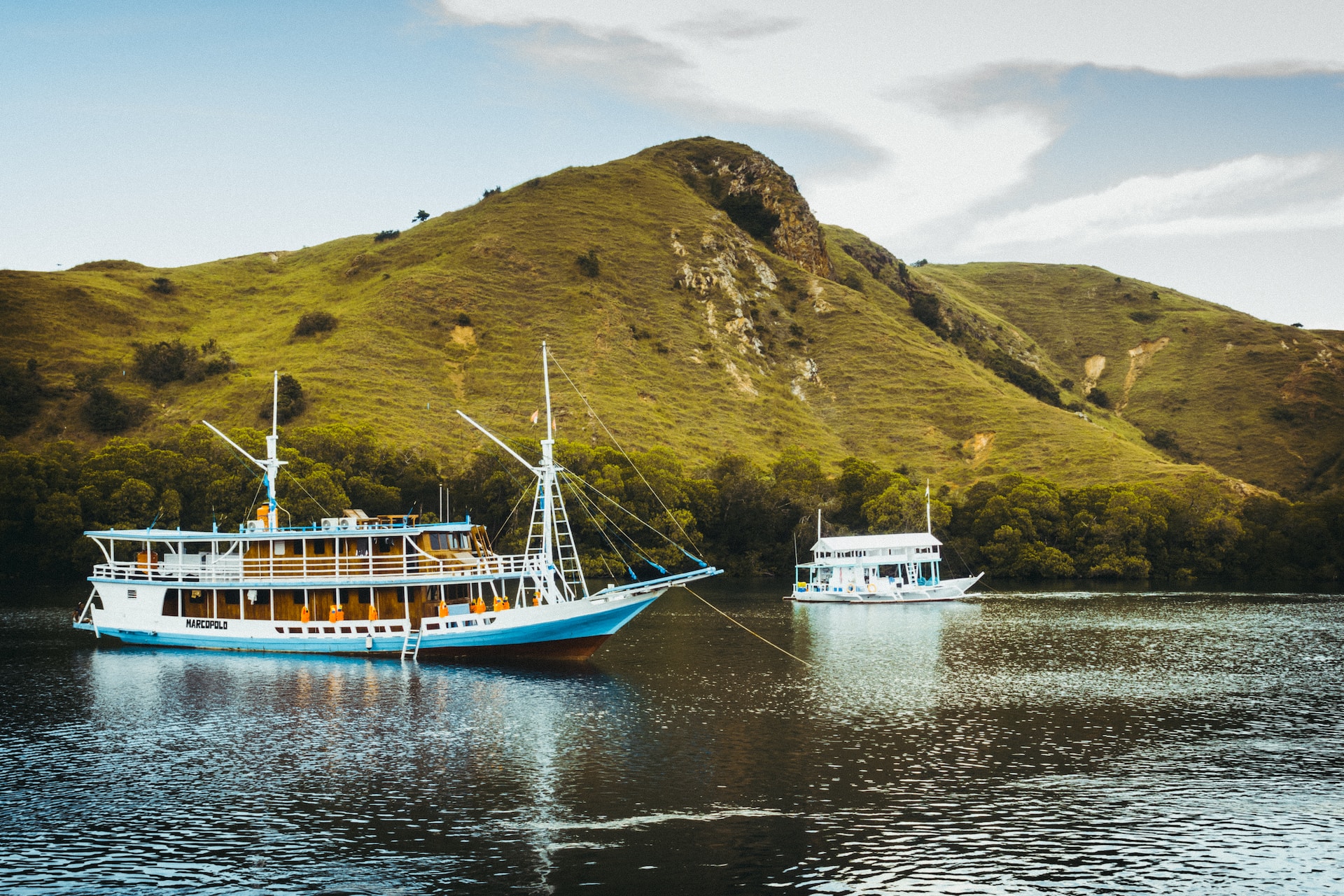Komodo National Park: Exploring the Enchanted Isles
Komodo National Park, located in the eastern part of Indonesia, is a mesmerizing destination that beckons travelers with its pristine beauty and fascinating wildlife. This UNESCO World Heritage Site comprises three major islands – Komodo, Rinca, and Padar – and numerous smaller islets. Spanning over 1,733 square kilometers, the park offers a diverse range of experiences, from encountering the mighty Komodo dragons to diving into crystal-clear waters surrounded by vibrant coral reefs.
The Breathtaking Beauty of Komodo National Park
Nestled within the Lesser Sunda Islands, Komodo National Park is a haven of natural wonders. With its striking landscapes and unique biodiversity, the park presents an unparalleled opportunity for nature enthusiasts and adventure seekers alike.
Location and Overview
Komodo National Park is situated in the heart of the Indonesian archipelago, between the islands of Sumbawa and Flores. Its volcanic terrain, lush forests, and turquoise waters create a stunning backdrop for an unforgettable journey.
Unique Flora and Fauna
The park’s diverse ecosystem hosts a rich variety of flora and fauna. From towering trees and flowering plants to exotic bird species, the park is a botanist’s paradise. However, what draws most visitors to Komodo National Park is its legendary inhabitants – the Komodo dragons.
Exploring the Komodo Dragons
Komodo dragons, the world’s largest lizards, are a living wonder that roam freely in their natural habitat within the park.
A Living Dinosaur
Often referred to as living dinosaurs, Komodo dragons have remained relatively unchanged for millions of years. Witnessing these formidable creatures up close is an awe-inspiring experience.
Natural Habitat and Behavior
Venture on guided tours to observe the dragons in their natural environment. Learn about their hunting techniques, mating rituals, and social behaviors from experienced park rangers.
Conservation Efforts
Discover the ongoing conservation efforts aimed at preserving the endangered Komodo dragons and their fragile ecosystem. Understand the importance of sustainable tourism in protecting these majestic creatures for future generations.
Diving and Snorkeling in Pristine Waters
Beneath the waves of Komodo National Park lies a mesmerizing underwater world waiting to be explored.
Coral Reefs and Marine Life
Divers and snorkelers are treated to a kaleidoscope of colors as they immerse themselves in the park’s thriving coral reefs. Swim alongside manta rays, turtles, and a plethora of tropical fish.
Famous Dive Sites
Explore world-renowned dive sites like Batu Bolong and Crystal Rock, where thrilling drift dives and encounters with sharks are not uncommon.
Trekking Adventures
For those seeking terrestrial adventures, Komodo National Park has much to offer.
Hiking Trails and Scenic Landscapes
Embark on trekking excursions through lush forests and savannas, leading to breathtaking viewpoints that offer panoramic vistas of the park’s islands and coastlines.
Padar Island: A Photographic Paradise
Padar Island’s iconic landscape of three pristine bays with different-colored sand is a photographer’s dream. Capture the postcard-perfect scenery as the sun sets over the horizon.
Pink Beaches and Unspoiled Islands
Komodo National Park is home to rare and magical pink beaches.
The Phenomenon of Pink Beaches
Discover the unique geological processes that give rise to the pink sands found on certain beaches within the park.
Seraya Island: A Hidden Gem
Escape the crowds and set foot on Seraya Island, a secluded paradise that offers a tranquil retreat amidst untouched beauty.
Local Culture and Traditions
Experience the authentic charm of the local communities residing in and around Komodo National Park.
Indigenous Communities
Interact with the indigenous people of Komodo, Rinca, and Flores, and gain insight into their way of life, traditions, and customs.
Festivals and Celebrations
If timing permits, participate in traditional festivals that showcase the region’s vibrant culture and heritage.
Sustainable Tourism and Eco-Friendly Practices
Preserving the pristine environment of Komodo National Park is a collective responsibility.
Preserving the Park’s Natural Wonders
Learn about the park’s sustainable initiatives and the role of responsible tourism in safeguarding its fragile ecosystem.
Responsible Tourism Tips
As visitors, we can contribute positively to the preservation of the park by following eco-friendly practices and supporting local conservation efforts.
Best Time to Visit Komodo National Park
Plan your journey to the park wisely to make the most of your experience.
Weather and Seasons
Understand the climate patterns to choose the ideal time for activities like diving, trekking, and wildlife spotting.
Avoiding Tourist Crowds
Opt for lesser-visited months to enjoy a more intimate encounter with nature and wildlife.
How to Get to Komodo National Park
Getting to this remote paradise requires some planning, but the effort is undoubtedly worth it.
Labuan Bajo: The Gateway to Komodo
Arrive in Labuan Bajo, the bustling harbor town serving as the primary gateway to the park’s wonders.
Transportation Options
Explore the different transportation options available to access the park’s islands and attractions conveniently.
Where to Stay
Choose from a range of accommodation options to suit your preferences and budget.
Accommodation Choices
From luxurious resorts to eco-lodges, find the perfect place to unwind after a day of exploration.
Eco-Lodges and Resorts
Consider staying at eco-friendly accommodations that prioritize sustainability and responsible practices.
Experiencing Komodo National Park Safely
While exploring the park’s wilderness, safety should always be a priority.
Wildlife Interactions
Observe wildlife from a safe distance and follow expert guidance during encounters with Komodo dragons.
Safety Guidelines
Stay informed about safety guidelines and regulations to ensure a secure and enjoyable experience.
Must-Try Local Cuisine
Delight your taste buds with the authentic flavors of Komodo National Park.
Unique Flavors and Ingredients
Discover the distinctive ingredients that characterize the local cuisine and the cultural significance behind each dish.
Dining Recommendations
Explore local eateries and savor traditional delicacies for an immersive culinary experience.
Capturing Memories: Photography Tips
Preserve the magic of Komodo National Park through the lens of your camera.
Capturing Wildlife Moments
Learn essential wildlife photography techniques to capture stunning shots of the diverse fauna.
Landscape Photography
Master the art of landscape photography to encapsulate the park’s breathtaking vistas.
Conclusion
Komodo National Park is a place where dreams meet reality. With its awe-inspiring landscapes, vibrant marine life, and encounters with ancient reptiles, this Indonesian gem offers an extraordinary adventure. By embracing sustainable tourism practices, we can protect and preserve this enchanting paradise for generations to come.
FAQs
- Is it safe to encounter Komodo dragons up close? While Komodo dragons are fascinating creatures, it’s essential to follow safety guidelines and stay within designated areas during encounters.
- What are the best months for diving in Komodo National Park? The dry season, from April to December, is generally considered the best time for diving due to better visibility and calmer waters.
- Are there accommodation options within the park itself? No, accommodation within the park is limited to day-use facilities. Most visitors stay in Labuan Bajo or nearby islands.
- Can I visit Komodo National Park on a day trip? While it’s possible, a day trip may not do justice to the park’s vast beauty and all it has to offer. Consider spending at least two to three days for a more fulfilling experience.
- What can I do to support conservation efforts in the park? You can support conservation efforts by choosing eco-friendly accommodations, following park regulations, and contributing to local conservation organizations.


Comments are closed.